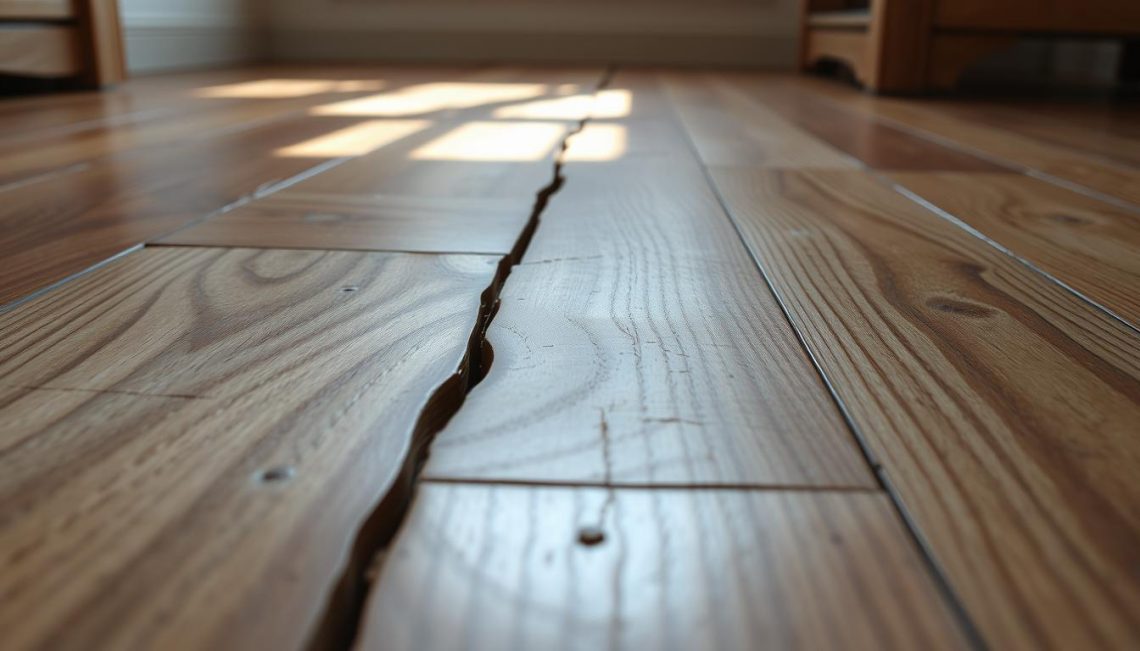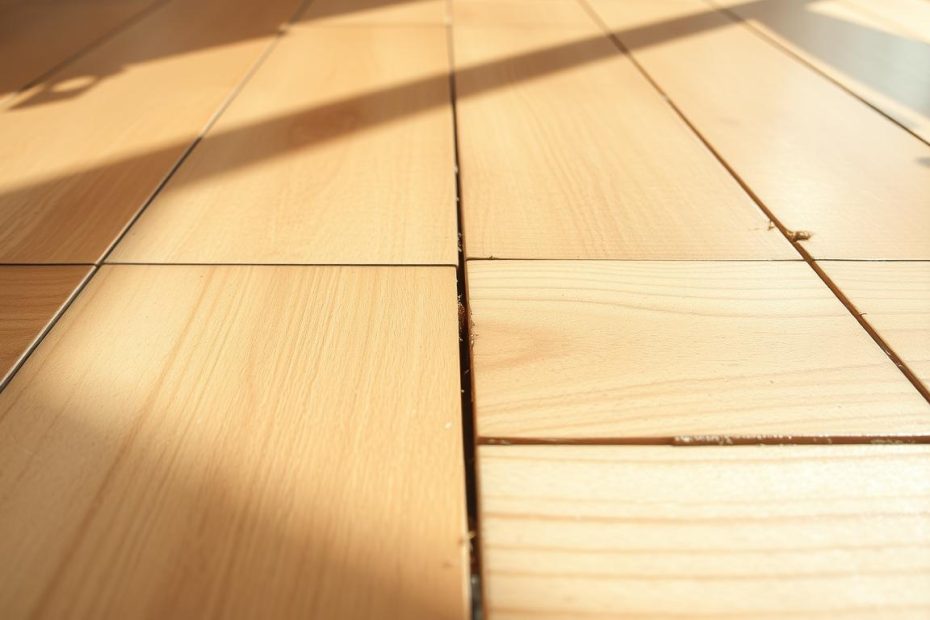We understand that gaps in your hardwood floors can be unsightly and concerning. Over time, changes in humidity and temperature can cause your hardwood to shrink, resulting in gaps between the boards.
In this article, we will guide you through understanding why these gaps occur and how to fix them effectively through hardwood floor repair techniques, including filling gaps in hardwood. Our goal is to provide you with a comprehensive guide to restoring your hardwood floors to their original beauty.
We’ll explore the causes, solutions, and maintenance tips to keep your hardwood looking its best. By the end of this article, you’ll be equipped with the knowledge to address gaps in your hardwood floors and maintain their integrity.
Understanding Why Gaps In Hardwood Floors Occur
Hardwood floor gaps are not just aesthetically displeasing; they often signal underlying issues that need to be addressed. Gaps in hardwood floors can arise due to various factors, and understanding these causes is crucial for determining the appropriate repair methods.
Several factors contribute to the formation of gaps in hardwood floors. These include seasonal changes that cause wood to expand and contract, issues related to the installation of the hardwood floor, and the natural aging process of the wood.
Seasonal Changes and Wood Movement
Seasonal changes play a significant role in the formation of gaps in hardwood floors. As humidity levels fluctuate throughout the year, wood expands and contracts. In dry conditions, wood shrinks, potentially leading to gaps between the floorboards. Conversely, in humid conditions, wood expands, which can cause the floorboards to buckle or become tightly packed.

Installation Issues and Age Factors
Installation issues are another significant factor that can lead to gaps in hardwood floors. If the hardwood floor is not installed correctly, with adequate spacing between the boards to allow for expansion and contraction, gaps can form over time. Additionally, as hardwood floors age, the wood can dry out and shrink, leading to gaps.
| Cause | Description | Impact |
|---|---|---|
| Seasonal Changes | Fluctuations in humidity cause wood to expand and contract. | Gaps form during dry conditions; buckling occurs in humid conditions. |
| Installation Issues | Inadequate spacing between floorboards during installation. | Gaps form as wood shrinks over time. |
| Age Factors | Natural aging process of the wood. | Wood dries out and shrinks, leading to gaps. |
By understanding the causes of gaps in hardwood floors, homeowners can take proactive steps to prevent or minimize their occurrence. Proper installation, maintaining a stable indoor climate, and regular maintenance are key to preserving the integrity and appearance of hardwood floors.
Step-by-Step Methods to Fix Gaps In Hardwood Floors
Whether you’re dealing with small or large gaps, there are several methods to fix them and restore your hardwood floor’s original look. Fixing gaps in hardwood floors requires the right tools and a bit of know-how, but with the right approach, you can achieve professional-looking results.
Tools and Materials You’ll Need
Before you start, it’s essential to gather the necessary tools and materials. For most gap-filling tasks, you’ll need a putty knife, wood putty or filler, colored caulk, wood strips, shims, and a rope filler if you’re dealing with larger gaps.
- Putty knife for applying and smoothing out filler
- Wood putty or filler to fill small gaps
- Colored caulk for a seamless finish
- Wood strips and shims for larger gaps
- Rope filler for a unique and effective solution
Filling Small Gaps (Less Than 1/8 Inch)
For small gaps, you have a couple of effective options: using wood putty or filler, or applying colored caulk.
Using Wood Putty or Filler
Wood putty or filler is a great way to fill small gaps. Simply apply the putty or filler with a putty knife, pressing it firmly into the gap. Wipe away any excess with a damp cloth.
Applying Colored Caulk
Colored caulk can also be used to fill small gaps and has the advantage of being available in various colors to match your hardwood floor. Apply the caulk directly into the gap and smooth it out with a damp finger or cloth.
Addressing Medium to Large Gaps
For larger gaps, more involved methods are necessary. You can use wood strips and shims or try the rope filler technique.
Wood Strips and Shims Method
Cut a wood strip to fit the gap, and use shims to secure it in place. This method requires some precision but provides a durable solution.
Rope Filler Technique
The rope filler technique involves using a rope-like material that is colored to match your hardwood floor. It’s an effective and visually appealing solution for larger gaps.
When to Call a Professional
If you’re dealing with extensive gaps or if you’re unsure about the best method to use, it may be time to call a professional. They can assess the situation and provide a solution that ensures your hardwood floor remains beautiful and durable.
By following these step-by-step methods, you can effectively fix gaps in your hardwood floors and maintain their beauty for years to come.
Maintaining Your Repaired Hardwood Floor
After investing time and effort into repairing the gaps in your hardwood floor, it’s essential to maintain it properly to prevent future issues. Proper wood floor maintenance not only enhances the appearance of your hardwood floor but also extends its lifespan.
To keep your hardwood floor in excellent condition, we recommend regular cleaning with a suitable hardwood floor cleaner. Controlling humidity levels in your home is also crucial, as significant fluctuations can cause wood to shrink or expand, potentially leading to gaps. Using a humidifier or dehumidifier can help maintain a stable environment.
Periodically inspecting your hardwood floor and addressing any issues promptly is vital. If you notice signs of wear or damage, consider refinishing your hardwood floor to restore its original beauty. By following these hardwood floor repair and wood floor maintenance tips, you can enjoy a beautiful, gap-free hardwood floor for years to come.
